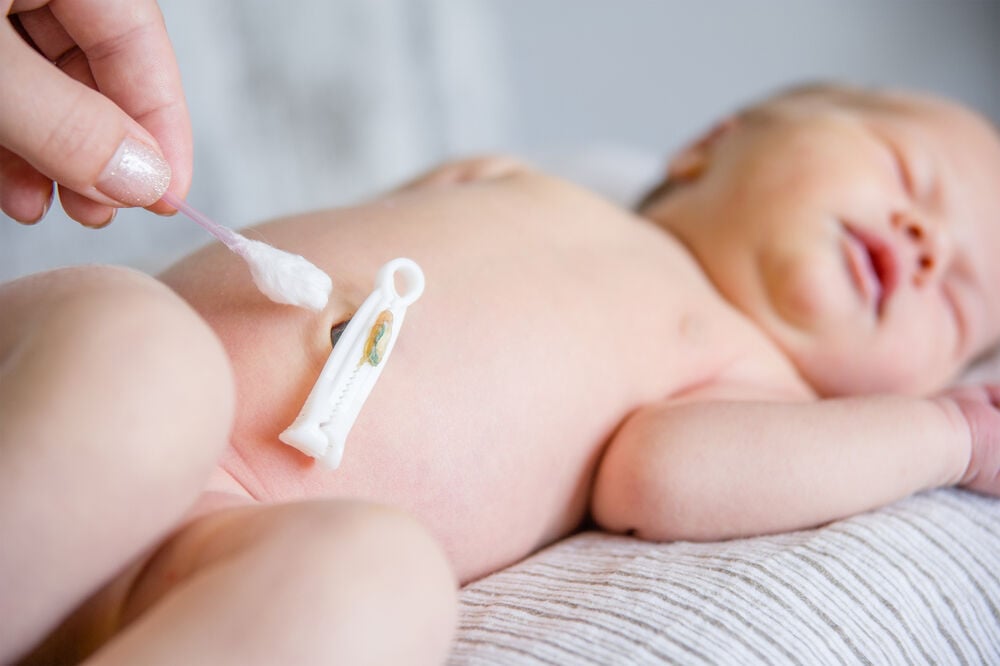During pregnancy, the umbilical cord supplies vital nutrients to your baby. After delivery, a small portion of the cord is left behind that gradually dries up and detaches. The area is now a belly button. Learn how to keep your baby’s belly button clean, dry, and free of infections with Flo.
-
Tracking cycle
-
Getting pregnant
-
Pregnancy
-
Help Center
-
Flo for Partners
-
Anonymous Mode
-
Flo app reviews
-
Flo Premium New
-
Secret Chats New
-
Symptom Checker New
-
Your cycle
-
Health 360°
-
Getting pregnant
-
Pregnancy
-
Being a mom
-
LGBTQ+
-
Quizzes
-
Ovulation calculator
-
hCG calculator
-
Pregnancy test calculator
-
Menstrual cycle calculator
-
Period calculator
-
Implantation calculator
-
Pregnancy weeks to months calculator
-
Pregnancy due date calculator
-
IVF and FET due date calculator
-
Due date calculator by ultrasound
-
Medical Affairs
-
Science & Research
-
Pass It On Project New
-
Privacy Portal
-
Press Center
-
Flo Accuracy
-
Careers
-
Contact Us
Umbilical Cord Care: An In-Depth Guide

Every piece of content at Flo Health adheres to the highest editorial standards for language, style, and medical accuracy. To learn what we do to deliver the best health and lifestyle insights to you, check out our content review principles.
Umbilical cord care essentials
After childbirth, it’s common practice to sever the umbilical cord, except for a lotus birth. Up to an inch of the umbilical cord stump remains attached to your baby’s belly button.
Then, the cord stump slowly shrinks and changes in color from yellow to brownish-black, then dries up and falls off roughly two to three weeks later. Next, we’ll explore the ins and outs of newborn umbilical cord care to guarantee a smooth, healthy transition for your little one.
How to clean a baby’s belly button
When it comes to your newborn, there’s no such thing as being too gentle. Give them some TLC with these pointers on how to clean a belly button.

- Pediatricians used to recommend applying rubbing alcohol to the umbilical stump. These days, however, most doctors suggest leaving the baby’s belly button alone as much as possible.
- Always wash your hands before changing their diaper and whenever you come into contact with their belly button.
- Wondering exactly how to clean a belly button? Soak an earbud or cotton swab in water and squeeze out the excess liquid. Then, gently dab the area, without rubbing.
- The drier your child’s belly button stays, the sooner the umbilical stump will form a scab and shed. As much as possible, keep the base of the stump outside of the diaper and exposed to fresh air.
- Until the stump detaches, only give sponge baths to your newborn. This will protect their belly button from exposure to moisture. If it does get wet, gently dab the area with a soft cloth and make sure it’s completely dry before diapering.
Prevent diaper irritation
Sometimes, your baby’s diaper can rub against their umbilical stump, causing abrasion or bleeding. You can minimize this friction by folding the top portion of the diaper down and away from their belly button. Or, consider switching to diapers that are specially designed with a cutout at the waist.
Take a quiz
Find out what you can do with our Health Assistant
Choose clothes wisely
To promote faster belly button healing, allow your infant’s umbilical stump to have exposure to plenty of fresh air and steer clear of potential irritants. Select clothing made of soft fabrics with a looser fit to enhance airflow. Whenever possible, avoid pants or bottoms altogether; this way, there won’t be any waistband rubbing against the area.
Exercise patience
Belly button healing usually takes no more than a few weeks, especially if the spot is kept clean and dry.
As tempting as it may seem, never pick at or pull your child’s umbilical stump since this increases their chances of infection. Simply let nature take its course. It will dry up and fall off before you know it.
Is belly button bleeding a problem?
While your newborn’s belly button heals, you’ll probably notice a little blood around the stump. Prior to detaching, the stump tends to bleed slightly, just like a scab would. This is normal. Carefully clean the surrounding area and make sure nothing is rubbing against it.
Signs of an infected belly button
Complications do occasionally occur, so if your baby displays any of the following symptoms, consult your pediatrician immediately.
- The area suddenly becomes red and/or swollen.
- The belly button begins to ooze yellow or clear puss.
- Their belly button region forms a moist, pink bump.
- An unusual, foul belly button smell develops.
- Your child develops a fever.
- Your baby cries when you touch the cord or the skin next to it.
What if a baby’s umbilical stump doesn’t heal?
In rare cases, some babies may need more than three weeks for the umbilical stump to detach. If this happens, your little one’s belly button may produce an umbilical granuloma. This is the result of an overgrowth of scar tissue but is easily treated. Ask your pediatrician for further info on how to proceed.
Ultimately, the best way to care for your infant’s delicate belly button is by ensuring it stays clean and dry at all times. If the umbilical stump starts swelling or you notice any concerning symptoms, an infected belly button may be the culprit. A medical professional can diagnose the problem and recommend the best treatments.


Hey, I'm Anique
I started using Flo app to track my period and ovulation because we wanted to have a baby.


The Flo app helped me learn about my body and spot ovulation signs during our conception journey.


I vividly
remember the day
that we switched
Flo into
Pregnancy Mode — it was
such a special
moment.
Real stories, real results
Learn how the Flo app became an amazing cheerleader for us on our conception journey.




